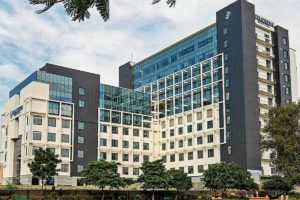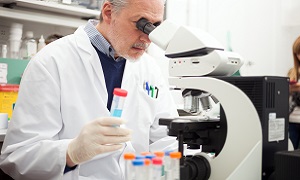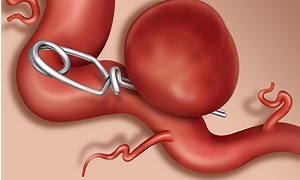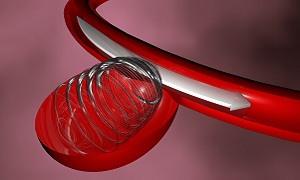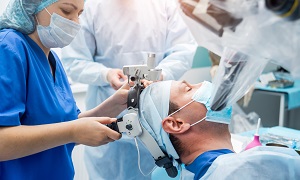Best Interventional Neuro-Radiologists for Endovascular Coiling of Brain Aneurysm (Non-surgical approach)
Best Neurosurgeons for Brain Aneurysm Clipping
Best Hospitals in India for Brain Aneurysm Treatment
Reliance Hospital, Mumbai
- City: Mumbai, India
Hospital Highlights:
- Reliance Hospital is one of the best super-specialty care hospitals in Navi Mumbai.
- The main purpose of this hospital is to become a trustworthy place for the best health and hope for society. The hospital is well connected to the suburbs of Mumbai and Navi Mumbai.
- The hospital has various specialty departments, viz., Accident & Emergency, Anesthesiology, Dental Services, Dermatology, Diabetology, Dietetics Nutrition, Endocrinology, ENT, Gastroenterology, General Surgery, Gynaecology And Obstetrics, Hepato Pancreato Biliary Surgery, Infectious Disease, Internal Medicine, Interventional Radiology, Laboratory Medicine, Minimal Access Laparoscopic Surgery, Nephrology, Neurosciences, Opthalmology, Orthopaedics, Paediatrics, Pain Management Palliative Care, Physical Medicine Rehabilitation, Plastic And Reconstructive Surgery, Psychiatry, Pulmonary Medicine, Radiology, Rheumatology, Transplant, Urology Andrology, Vascular Surgery
Lilavati Hospital & Research Centre, Mumbai
- City: Mumbai, India
Hospital Highlights:
- Lilavati Hospital & Research Centre is India’s premier multi-speciality tertiary care hospital and has been recognised as a global medical excellence centre.
- Lilavati Hospital & Research Centre has built an unrivalled level of trust with its patients over the years, thanks to a solid foundation that comprises cutting-edge facilities, the best medical competence, research, education, and charity endeavours.
- The hospital is quite proud of the fact that it now serves patients from all kinds of backgrounds, not just from the United States but from all around the world.
- The hospital has a total of 323 beds, one of the largest Intensive Care Units (ICUs), 12 Operation Theatres with modern amenities, over 300 consultants, and almost 1,800 personnel.
Venkateshwar Hospital, Dwarka, New Delhi
- City: New Delhi, India
Hospital Highlights:
- State-of-the-art technology and devoted healthcare professionals have been brought together under one roof at Venkateshwar Hospital to provide genuine medical care. The hospital’s professionals work together as a team to deliver the best possible treatment to their patients, using the most sophisticated equipment and information technology.
- Venkateshwar Hospital’s mission is to attain global excellence in healthcare by employing evidence-based, ethical clinical practices and cutting-edge technology by a team of highly skilled experts.
Brain Aneurysm
Brain Aneurysm is a condition in which there is ballooning or bulging of a blood vessel of your brain. It may rupture or leak which may result in bleeding in the brain. This is termed as a hemorrhagic stroke.
The space between the thin tissues that cover the brain and the brain is the most common spot for the occurrence of a ruptured Brain Aneurysm. It is often referred to as subarachnoid hemorrhage.
A ruptured aneurysm may prove to be life-threatening, thereby requiring an urgent need for medical treatment. While most of the aneurysms don’t rupture, they may cause symptoms and create health problems.
Causes of Brain Aneurysm
Common in people over the age of 40 years, Brain Aneurysm may occur at any age. Some may also have a defect in the blood vessels by birth. You may observe a significant female predilection. The sections where the blood vessels branch off are weaker. Brain Aneurysms are common at these places and mostly occur in the base of the brain. There are some factors responsible for the rupture of an already existing Brain Aneurysm. They may be:
- Excess straining during bowel movements
- Startling
- Excessive exercise
- Intense anger
- Coffee consumption
Damage to the structure of the arteries may result in weakness and cause Brain Aneurysms. If a serious infection in the body damages the arteries, it may lead to a Brain Aneurysm. Sometimes, chronic high blood pressure and smoking are also possible causes for brain aneurysms.
Symptoms of Brain Aneurysm
Unruptured Aneurysm: You may not notice any symptoms for an unruptured Brain Aneurysm, especially if it is a small one. However, the larger ones may press the nerves and tissues of the brain. Ultimately it may result in-
- Double vision or change in vision
- Pain above one eye
- Numbness on a side of the face
- Dilated pupil
Leaking Aneurysm: Sometimes, an aneurysm may leak some amount of blood that is called sentinel bleeding. This leaking may result in an extremely severe and sudden headache.
Ruptured Aneurysm: One of the chief symptoms of a ruptured Brain Aneurysm is a severe sudden headache. It is sometimes referred to as the worst headache that you will experience. Some other symptoms of a ruptured aneurysm include:
- Nausea
- Double vision or blurred vision
- Seizures
- Loss of consciousness
- Stiff neck
- Drooping eyelids
- Vomiting
- Sensitivity to light
- Confusion
Diagnosis of Brain Aneurysm
There are several tests and different types of scans that help in determining whether you have a Brain Aneurysm or not.
MRI
During MRI, your doctor will ask you to lie on a table that will slide into a scanner. It uses radio waves and a magnetic field to create detailed images of your blood vessels and brain. It has the ability to detect Brain Aneurysms that are larger than 5 millimeters.
CT Scans
During CT Scans, this type of examination creates the images of the brain. Similar to MRI, you will lie on a table that slides into the CT scanner. The technician will inject a dye into one of the veins to aid in seeing the blood flow while spotting aneurysms in your brain.
Angiogram
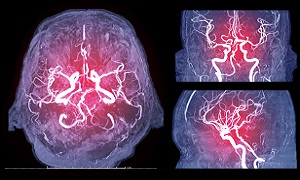
Angiogram is one of the most reliable tests to detect aneurysms. It depicts the weaker spots of your blood vessels. Your doctor will be inserting a small flexible tube called a catheter through the blood vessels in your leg. He or she will guide the catheter into the blood vessels of your neck that extend up to the brain. He or she will take X-rays after injecting a contrast dye to view all the blood vessels in your brain. This helps the doctor to easily figure out the location of the Brain Aneurysm.
CSF test
During CSF test, your doctor may recommend you cerebrospinal fluid test if he or she notices the symptoms of a ruptured Brain Aneurysm. The technician will inject a needle to draw out the spinal fluid. Your doctor will test the fluid to check whether it has blood that indicates a ruptured Brain Aneurysm.
Treatment options for Brain Aneurysm
For Unruptured Brain Aneurysm
There may not be a need for the treatment of small and unruptured aneurysms. Some lifestyle changes can help you prevent the leaking of the aneurysm like:
- Avoid stimulant drugs or cocaine
- Take a proper diet and exercise regularly to lower your blood pressure
- Avoid lifting heavy objects to avoid a rise in your blood pressure
- Stop smoking
- Restrict the consumption of caffeine because it may cause your blood pressure to elevate.
For Ruptured Brain Aneurysm
For a ruptured Brain Aneurysm, you need prompt treatment as it may bleed again. There’s a need to stop the blood flow into the ruptured aneurysm. Your doctor will recommend the best treatment possible based on the location, size, type of the aneurysm and your health.
Surgical clipping
Endovascular coiling
Flow diverter surgery
Lifestyle changes
- Regular exercise
- Quitting smoking
- Managing the blood pressure and cholesterol level
- Eating a balanced diet of whole grains, fruits, vegetables, meat and low-fat dairy products.
These small lifestyle changes may help significantly to manage Brain Aneurysms.



